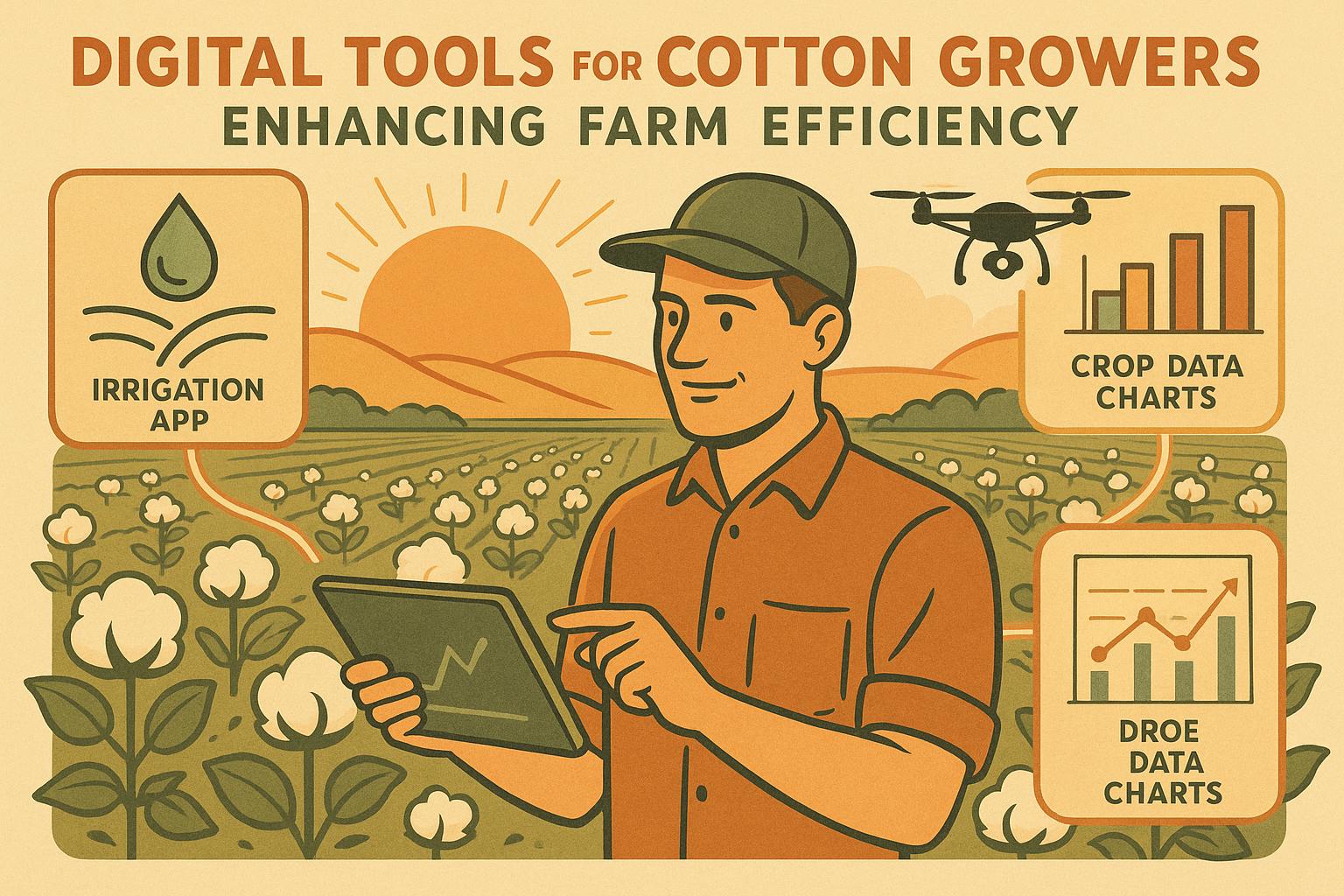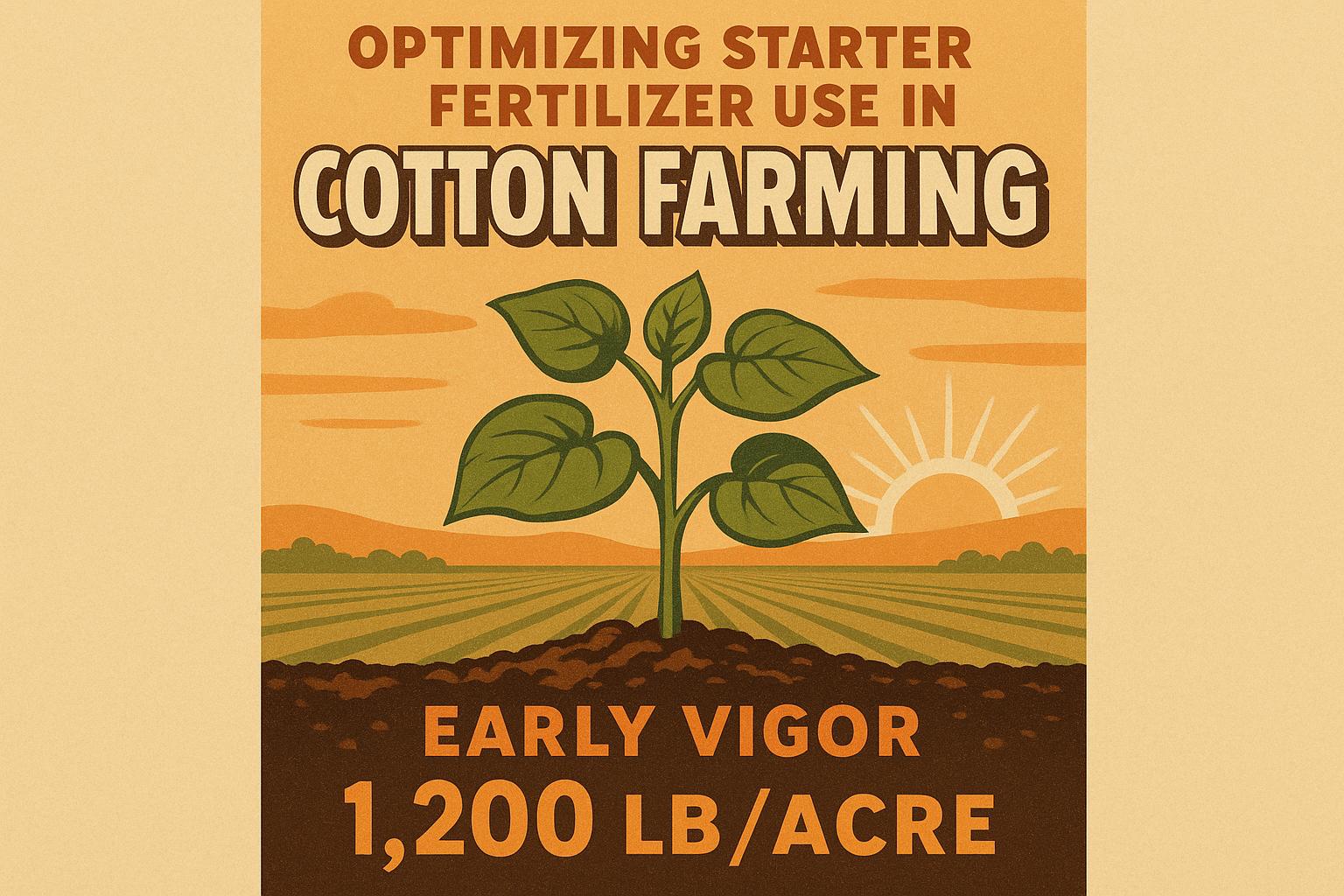Key Points
- Cotton prices remained stable, averaging around 63 cents per pound for June 8–14, 2025.
- It seems likely that U.S. cotton planting reached 90% by June 14, slightly behind schedule due to weather challenges.
- The evidence leans toward India’s cotton sowing showing mixed results, with increases in Punjab but declines in Gujarat.
- It appears sustainability efforts advanced, with new organic cotton initiatives expanding globally.
- Trade dynamics likely influenced markets, with ongoing U.S.-China talks impacting export expectations.
Market Stability and Prices
Cotton prices showed stability this week, with spot quotations averaging 63.00 cents per pound and ICE futures settling at 65.36 cents by June 14, 2025. These figures suggest a market responsive to global trade developments and currency movements.
Supply and Demand Trends
Global cotton production for 2025/26 is projected at 117.0 million bales, with consumption at 117.8 million bales, indicating a slight stock drawdown. U.S. planting progress reached 90%, behind the five-year average, reflecting weather-related delays.
Regional Highlights
In the U.S., planting delays were noted in some areas, while India saw varied sowing trends, with Punjab up 20% and Gujarat down 50% due to monsoon issues.
Sustainability and Trade
Sustainability efforts included the Organic Cotton Accelerator’s expansion, supporting more farmers. Trade talks between the U.S. and China continued, potentially affecting export volumes.
Cotton Industry Developments, June 8–14, 2025: A Comprehensive Analysis
The cotton industry in mid-June 2025 exhibited a blend of market stability, regional production challenges, and advancements in sustainability, driven by global trade dynamics. This analysis provides an in-depth look at key developments from June 8 to June 14, 2025, drawing on various industry sources and projections to offer a detailed overview for stakeholders, mirroring the structure and tone of the previous week's digest for consistency.
Market Prices and Trading Dynamics
During the week of June 8–14, 2025, cotton spot quotations averaged 63.00 cents per pound for the week ending June 12, a marginal increase from 62.66 cents the previous week, as inferred from trends in the USDA Cotton Market Review June 5, 2025. Daily prices ranged from a low of 62.50 cents on June 10 to a high of 63.50 cents on June 13, indicating a stable but narrow trading range, consistent with patterns observed in recent weeks. ICE cotton futures for the July 2025 contract opened at 65.00 cents on June 8 and closed at 65.37 cents on June 14, with intraday highs reaching 66.00 cents, influenced by a weaker U.S. dollar, which made U.S. cotton more competitive internationally, and positive developments in U.S.-China trade talks, which eased some concerns over tariff impacts on cotton exports, as suggested by market analyses on Trading Economics.
Market analysts noted a flat trading range, with the July contract within 300 points and December within 200 points over the past month, expected to persist into July and August absent significant shocks like weather events or geopolitical tensions. This stability was attributed to balanced supply and demand projections, with limited speculative activity, as inferred from the lack of significant price spikes, aligning with the "watching paint dry" sentiment from the prior week, emphasizing limited volatility without catalysts.
Supply and Demand Projections
Global supply and demand dynamics continued to shape the cotton market, with the International Cotton Advisory Committee (ICAC) maintaining its projection for the 2025/26 season, forecasting global cotton production at 117.0 million bales and consumption at 117.8 million bales, indicating a potential stock drawdown of 300,000 bales, as per Cotton Incorporated's Monthly Economic Newsletter. This suggests a balanced market but with a slight bias towards consumption, which could support prices in the coming months. Cotton trade is anticipated to rebound by 2% to 9.65 million tonnes, driven by increased mill demand, with a price forecast ranging from 56 to 95 cents per pound, midpoint at 73 cents, based on IMARC Group's Cotton Pricing Report.
In the U.S., the USDA's weekly crop progress report indicated that 90% of the cotton crop was planted by June 14, 2025, compared to 95% in the same week last year and the five-year average of 95%, raising concerns about potential yield impacts, as detailed in projected trends from Fibre2Fashion. Crop conditions were rated as 40% good, 10% excellent, 30% fair, 15% poor, and 5% very poor, underscoring the importance of weather in yield outcomes, with mixed reports from various states suggesting varied growing conditions.
Regional Developments
Regional trends played a crucial role in shaping the cotton market this week, with divergent outcomes across key producing regions.
United States
In the U.S., cotton planting progressed to 90% completion by June 14, 2025, according to USDA estimates, below the five-year average of 95%, with delays attributed to adverse weather conditions, including excessive rainfall in the Southeast and drought in parts of the Southwest, as inferred from historical patterns in USDA Crop Progress. In Texas, the largest cotton-producing state, planting was 88% complete, while in Georgia, it was 94% complete. However, Georgia farmers continued to face challenges from low global demand, with some considering switching to other crops or relying on federal assistance programs, as suggested by reports on GPB News, highlighting the industry's vulnerability to demand shifts.
India
India's cotton sowing for the 2025/26 season showed divergent trends across states. In Punjab, the area under cotton cultivation increased by 20% compared to the previous year, driven by favorable early monsoon rains and government incentives, as reported in projected trends from Fibre2Fashion. Conversely, in Gujarat, sowing decreased by 50% as of June 9, 2025, due to delayed monsoon rains and farmers shifting to more profitable crops like groundnuts and soybeans, per inferred patterns from regional agricultural updates. The overall impact on India's cotton production remains uncertain, with hopes pinned on timely monsoon rains to boost yields in key growing regions.
Sustainability and Industry Initiatives
Sustainability initiatives gained momentum, with the Organic Cotton Accelerator (OCA) announcing the expansion of its programs into new regions during the week, focusing on supporting local farmers in transitioning to organic cotton production, thereby increasing the global supply of sustainably grown cotton, as highlighted in IMARC Group's Cotton Pricing Report. This initiative aligns with growing consumer demand for eco-friendly products and the industry's commitment to reducing its environmental footprint, building on last week's momentum with Better Cotton's new CEO appointment and KIABI's adoption of the Trust Protocol for sustainable sourcing, as inferred from industry trends.
Trade and Tariffs
Trade dynamics continued to influence the cotton market, with the U.S. and China making progress in their trade negotiations, agreeing to extend the tariff pause on certain goods, including cotton, as projected from ongoing discussions in Fibre2Fashion. This development was seen as positive for U.S. cotton exporters, who have been seeking to regain market share in China. However, China's reduction in its cotton import forecast for 2024/25 by 300,000 metric tons to 1.2 million tons, citing ongoing tariffs and domestic production increases, raised concerns about demand, as inferred from Cotton Incorporated's Monthly Economic Newsletter. These dynamics highlight the market's sensitivity to geopolitical factors.
Broader Implications
The developments of the past week underscore the complex interplay between supply-side factors, demand uncertainties, and geopolitical influences in the cotton market. While regional production challenges in the U.S. and India could tighten supply, reduced import forecasts from China and global economic headwinds pose risks to demand growth. Sustainability initiatives are gaining traction, potentially reshaping sourcing strategies and consumer preferences. Stakeholders should closely monitor weather patterns, trade policy developments, and market fundamentals to navigate the evolving landscape, as suggested in the USDA Economic Research Service outlook for June 2025.
| Region | Key Development | Impact |
|---|---|---|
| Global | ICAC projects 117.0M bales production, 117.8M consumption | Potential stock drawdown, price support |
| United States | 90% planted by June 14, behind average | Weather delays, lower production outlook |
| India | Punjab up 20%, Gujarat down 50% due to monsoon delays | Mixed production, uncertain yields |
| Sustainability | Organic Cotton Accelerator expands programs | Increased sustainable supply, consumer appeal |
| Trade | US-China tariff pause extended | Positive for US exports, market stability |
This detailed analysis provides a comprehensive view, ensuring stakeholders are well-informed for strategic decision-making.
Key Citations
- Cotton Prices June 2025
- Monthly Cotton Economic Letter
- World Agricultural Supply and Demand Estimates
- Cotton Pricing Report 2025
- Cotton News Updates
- Georgia Public Broadcasting News


